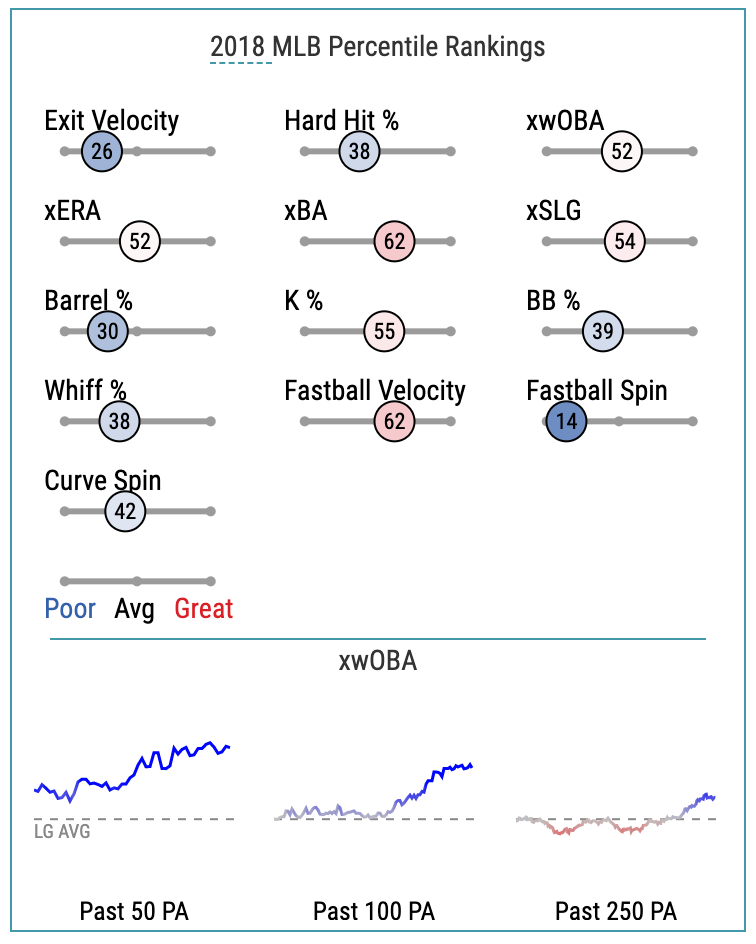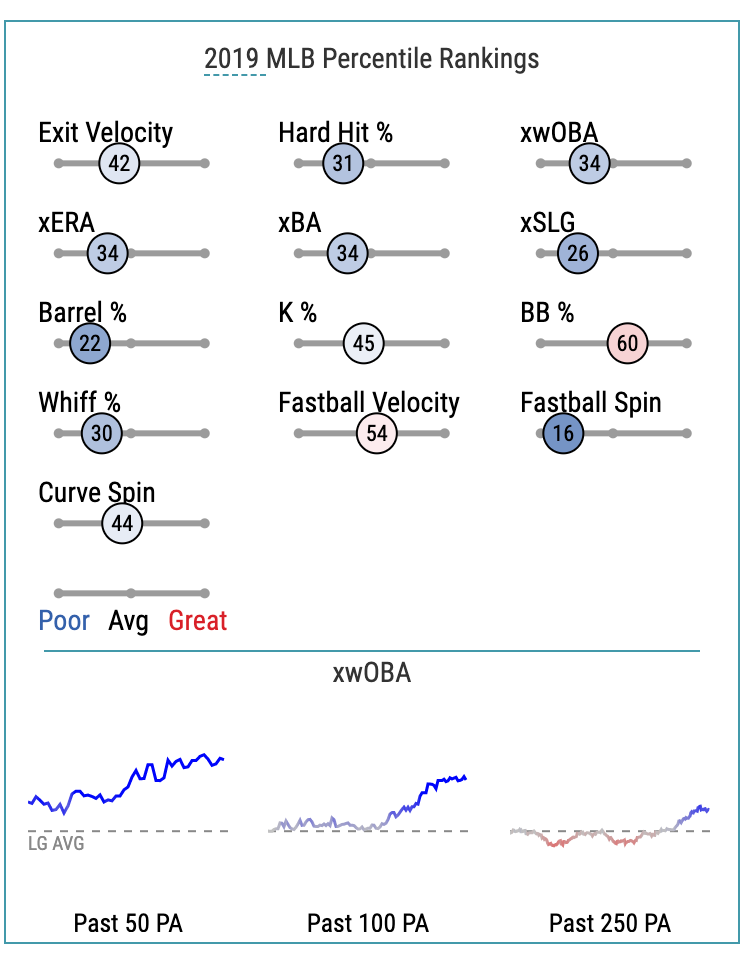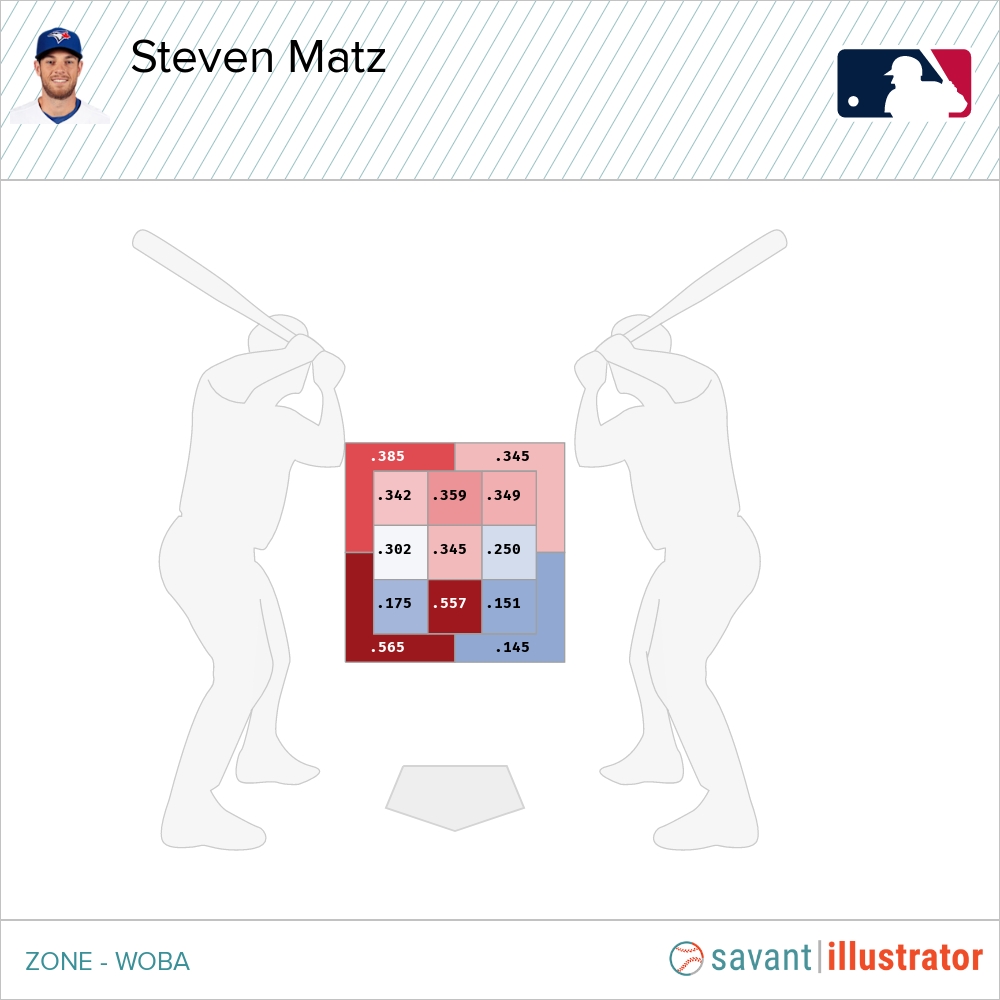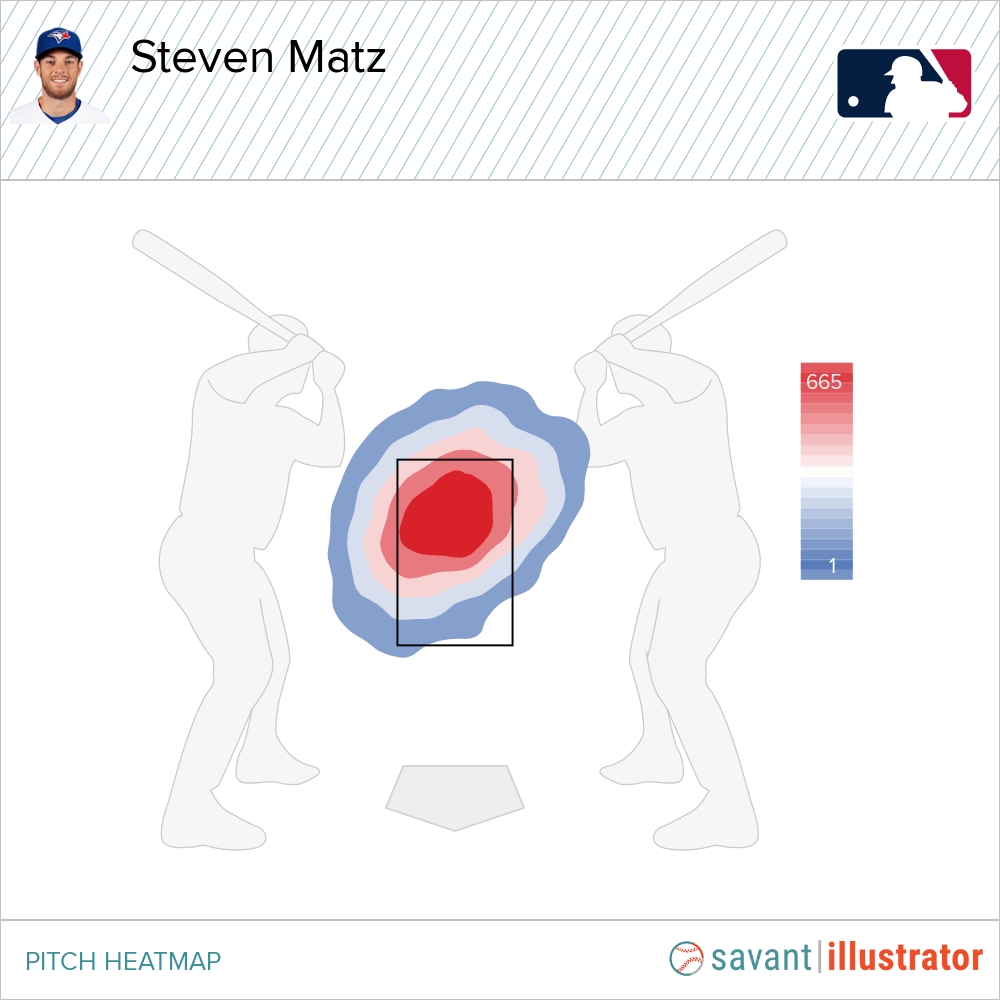Pound the Knees, Steven
After the Toronto Blue Jays traded for left-handed pitcher Steven Matz, he is projected to slide into the bottom of the starting rotation and pitch about 115 innings this year. Matz’s 2020 was a year to forget — join the club, Steven — but let’s take a look at who Matz is as a pitcher and why a change in fastball location is something the Jays coaching staff might consider.
Matz pitched only about 30 innings last year, so in the interest of sample size, I will also be using statistics from 2019 and 2018. Here is what those last three seasons looked like, courtesy of Baseball Savant:



There is a lot of moving parts in there, but I’d like to direct your attention to the fastball ratings. Specifically look at how Matz’s fastball, in the past three seasons at least, had an above-average velocity and a below-average raw spin rate. That in and of itself doesn’t make a pitch “good” or “bad,” but it might hint at its effectiveness in different parts of the zone.
Matz stopped using his four-seamer in 2018 and now stinks to a sinker. This is his bread-and-butter pitch; he has thrown it over 50% of the time in each of the past three seasons. It sits in the 93-95 mph range, with a spin rate that has been increasing but was still under 2,300 rpms in 2020. And there just might be a way for Matz to get more out of it.
I’m not sure how familiar you are with Bauer units, named after the reigning NL Cy Young Award winner. The formula for Bauer units is really simple; it’s just the spin rate of a pitch in rpms divided by its velocity. Why would we want to do that? It allows us to compare and classify pitches as high-spin or low-spin while normalizing for velocity. Fastballs thrown at a higher velocity tend to spin at a higher rate, and Bauer units allow us to remove velocity from the equation when comparing how “spinny” a particular pitch is.
Why is that important? According to the linked Driveline article, the average MLB fastball is around 24 Bauer units. Fastballs with higher Bauer units tend to be more effective up in the zone; these are the fastballs that seem as if they are “rising” to the hitter and they struggle to square them up. The poster boy for a higher Bauer unit fastball is — ironically, if you know their UCLA and pro history — Gerrit Cole. In 2020, Cole averaged 2,505 rpms on his four-seam fastball at 96.7 mph. That’s 2,505/96.7 = 25.90 Bauer units. And here is Cole’s four-seam fastball heat map from 2020, with a clear preference for locating it up in the zone.

This brings us back to Matz. Here is a table of his sinker Bauer units from the past three years.
| Year | Sinker rpms | Sinker Velocity | Bauer Units |
|---|---|---|---|
| 2018 | 2,069 | 93.4 mph | 22.15 |
| 2019 | 2,102 | 93.3 mph | 22.53 |
| 2020 | 2,230 | 94.5 mph | 23.60 |
The sample size for 2020 is not great, but regardless, Matz’s sinker is a low-spin offering and should therefore be more effective low in the zone. Let’s see what the batted ball data says.


The above is only for the sinkers in the three seasons 2018–2020. When Matz throws the sinker and contact is made in the bottom third of the zone, you can hear it. We have exit velocities of 93, 95, and 97 mph. However, after you hear the loud contact — with the advances in fielder positioning, shifts, etc. — the next thing you hear is probably the smack of the ball landing in an infielder’s glove. That’s because the launch angles in the bottom of the zone are all below 10 degrees, with the lone exception being when Matz misses down to his glove side. Do the outcomes line up with the underlying metrics?

If Matz stays away from the middle of the plate, he has more success down in the zone. The wOBAs are decreasing as we travel down in the zone to Matz’s glove side: .342, .302, .175 from top to bottom — as well as to his arm side: .349, .250, .151. Down to his arm side seems to be his most effective location: wOBAs of .151 in the zone and .145 on the chase, driven by launch angles of 3 and -6, respectively.
With all of that out of the way, let’s take a look where Matz has actually been throwing his sinker in the past three years.

Well, what do you know, Matz has mostly been working his sinker up in the zone. Remember that location with low wOBAs and launch angles from the pictures above? Matz has hardly gone that way at all. The reason, of course, might be that if Matz goes down and to his arm side, he catches the batter off-guard and that’s why he’s been successful when he’s done it. Yet I wonder if this is something the Jays might have picked up on? We’ve all read the stories of the Astros targeting high-spin guys in trades in their World Series years and getting them to work up in the zone more. Cole is a prime example of that. Could the Jays have seen a potential adjustment to be made and bought low on a pitcher coming off a disastrous 2020?
There is obviously more to a pitcher’s plan of attack than just location of one pitch; how a pitcher’s full arsenal of pitches compliment each other, pitch tunneling, and more are all important. I could be way off base, but now I’m curious whether Matz’s sinker will stay more or less the same in 2021, or if we’ll see him try to keep it lower in the zone a little bit more.

Very interesting, thank you for working out. I would also wonder if there was a difference for lefties vs. righty hitters? For example low in the zone batting averages are low at the corners, but maybe it is specifically in or away depending on handedness?